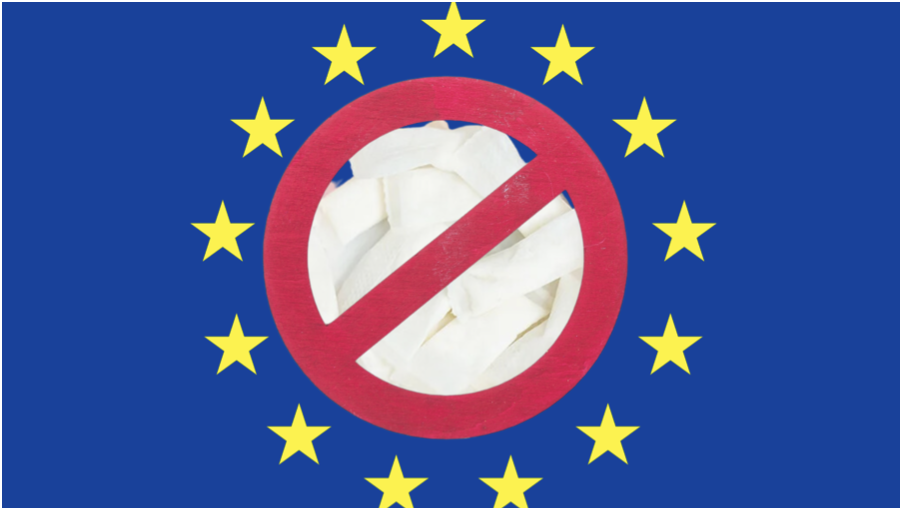Your cart is currently empty!
Blog
-

RELX Supplier Alpha Electronics in Crisis: Factory Shutdown, Lawsuits, and Frozen Assets Shake China’s Vape Supply Chain
Once hailed as a rising star in China’s vape supply chain, Alpha Electronics — the wholly owned e-cigarette subsidiary of Changying Precision (300115.SZ) — is now fighting for its life.
The company that once powered major brands like RELX, British American Tobacco, and JUUL is suddenly at the center of a legal and operational storm.💨 From Industry Darling to Legal Drama
Founded in 2019, Dongguan-based Alpha Electronics was once the golden child of vape manufacturing — producing devices, pods, and heating systems for some of the biggest names in the business.
By 2021, it had expanded to a whopping 50,000 square meters of production space, a factory floor so large it could probably house a small airport. Back then, industry watchers called it a “next-generation leader.”
Fast-forward to 2025: that same “leader” is now tangled in more than a dozen lawsuits, listed as an abnormal business, and missing from its registered address.
⚖️ Legal Headaches: “Sue Me Once, Shame on You…”
Alpha’s legal troubles have been piling up faster than unsold vape pods.
The company faces multiple cases over contract and trade disputes, with plaintiffs including:
- Shenzhen Fogcore Technology Co. (RELX’s parent company)
- Shenzhen Tianzhu Biotech Co.
- Sigelei Technology
- Kelaien Trading (Guangzhou)
- Xinzhongjun Printing Technology
Court records show 1 filed case, 13 trial announcements, and 5 official court notices. Three of those involve none other than RELX itself.
In other words, Alpha’s courtroom schedule looks busier than its production line used to be.
🚫 Officially “Abnormal”
Adding to the chaos, Alpha Electronics was officially listed as “business abnormal” on June 24, 2025, after regulators couldn’t reach it at its registered address.
Social media reports claim the factory park in Dongguan has already been vacated, with the Alpha signboards and logo removed. The space has since been re-rented to other companies — a quiet but clear sign that operations have stopped completely.
So if you drive by expecting to see vape pods being boxed, you’ll find fresh tenants and new logos instead.
💸 Frozen Assets, Melting Reputation
On top of that, the Dongguan Third People’s Court froze equity belonging to Alpha’s holding company — Anhui Jingmeng New Materials Technology Co. — for ¥100,000, valid from July 2024 to June 2027.
That’s not a massive sum, but in corporate law, it’s like the canary in the coal mine — a small freeze that signals a much bigger chill in financial health.
🏭 End of Production, End of the Road
Once a key supplier during the fruity-vape boom, Alpha began losing ground when China tightened e-cig regulations and banned flavored products.
As demand shifted, orders dried up, and Alpha’s long-term contracts started unraveling.The company’s partnership with RELX once produced the “RELX Alpha” co-branded series — but now, the two are locked in three ongoing lawsuits. Talk about a breakup gone legal.
🤔 What’s Next?
Alpha Electronics’ situation is a cautionary tale for China’s once-booming vape sector: fast growth, high margins, and sudden implosion.
What was once a brand synonymous with precision is now a reminder that scale doesn’t equal stability.
Between regulatory tightening, vanishing cash flow, and lawsuits from major clients, Alpha’s story might soon join the long list of “rise and fall” case studies in China’s e-cig history. -

EU’s Vape Ban Backlash: Brussels Pushes to Outlaw Vapes and Nicotine Pouches, Critics Cry ‘Science-Free Madness
Just when you thought European regulators couldn’t blow a bigger cloud of confusion, the European Commission has apparently decided to go full prohibition mode on vaping and nicotine pouches.
According to a leaked internal document obtained by the World Vapers’ Alliance (WVA) on October 9, the EU plans to push for a complete ban on both products at the World Health Organization’s COP11 conference, set for November 17–22 in Geneva.
🚭 The Proposal That’s Got Everyone Gasping
In the leaked draft, submitted to the EU’s Public Health Working Party on October 7, the Commission writes:
“Reaffirm support for strict regulation of electronic nicotine delivery systems (ENDS/ENNDS) and nicotine pouches, including the possibility of a total ban, particularly to protect children and adolescents.”
Translation: They’re leaving the door wide open for a total vape-pocalypse.
If this stance holds, Brussels could walk into the WHO conference waving a “Ban Everything” banner — and leave millions of European ex-smokers wondering what to do with their soon-to-be-illegal vape pens.
😤 The Industry Fights Back: “Science Called — It Wants Its Data Back”
The World Vapers’ Alliance, led by Michael Landl, didn’t mince words:
“This proposal denies science, replaces facts with ideology, and tramples on the rights of smokers who want safer alternatives.”
He warned that a total ban would wipe out years of harm-reduction progress across Europe and could drive millions back to cigarettes — “causing unnecessary suffering and deaths,” as he put it.
In short: if the EU really wants to save lives, maybe don’t start by banning the safer options?
📜 The Legal Irony: WHO Rules Say “Harm Reduction,” Not “Harm Amplification”
Critics were quick to point out that the WHO Framework Convention on Tobacco Control (FCTC) — the very treaty the EU claims to be upholding — explicitly mentions harm reduction as one of its three pillars (Article 1(d)).
So by pushing for a total ban, the EU might actually be breaking the spirit of the very document it’s waving around in Geneva.
Call it what you will — “regulatory overreach,” “science-free policymaking,” or just “Brussels being Brussels.”
🧪 Vapers’ Alliance: “Follow the Science, Not the Panic”
The WVA is urging EU member states to reject the ban and stand up for public health grounded in evidence, not hysteria.
Their message:
“Harm reduction is the only responsible public health path forward. Europe must not abandon science and progress.”
In other words, maybe keep calm, vape on, and remember that prohibition has never been a great European export.
🧠 The Bigger Picture
If adopted, this proposal wouldn’t just kill off a booming industry — it would also undermine Europe’s global reputation as a leader in pragmatic health policy.
From Stockholm to Sofia, public health experts are already whispering:
“Did Brussels just forget the difference between a cigarette and a smoke-free device?”Because if Europe starts banning safer nicotine products in the name of “health,” it might just become the first region to regulate itself back into the 1980s.
-

From Boom to Bust: How China’s Vape Industry Is Digging for Gold in Its Own Junk Pile
There was a time—not so long ago—when the vape business was printing money faster than its machines could puff out vapor.
Between 2018 and 2022, the global e-cigarette market sprinted ahead at more than 30% annual growth, and China, the factory of the world, pumped out over 90% of global supply. Everyone wanted a piece of the action, and millionaires were minted faster than bubble tea shops.But every boom comes with a hangover.
💨 The Slowdown: From Glory Days to Ground Game
In August 2025, China’s vape exports hit $936 million, up a modest 5.3% month-on-month and 4.3% year-on-year—a polite way of saying the party’s nearly over.
The National Tobacco Administration has already cracked down on overproduction, halting 103 unauthorized new vape projects.Profit margins have plunged from 60%+ in the glory days to around 20%, with many smaller players gasping for breath.
In short: the industry’s gold rush has turned into a copper-scrap hunt.
⚙️ From “Grow Big” to “Grow Smart”
The vape boom has officially graduated into the micro-profit era. Once-explosive growth has shifted to a survival game of efficiency and refinement.
- The UK banned disposables.
- Malaysia might soon ban vapes entirely.
- The U.S. FDA keeps swinging its regulatory hammer like a caffeine-addicted Thor.
- The EU is mulling nicotine limits and advertising bans.
Inside China, things aren’t easier. The “capacity + scale double-control” policy is in full swing. Companies must now print production quotas on their licenses like calorie counts on fast food menus. The number of licensed manufacturers has crashed from 1,500+ to fewer than 500.
Survival of the fittest? More like survival of the thriftiest.
🪙 From Big Bucks to Pocket Change
When the fat years end, you start counting pennies.
Smart companies are looking where no one else does:
- expired inventory,
- overstocked pods,
- “almost-new” batches, and
- old devices collecting dust.
Instead of tossing them, they’re re-selling, recycling, or re-packaging them into bargain lines for cost-savvy smokers.
It’s not glamorous—but in a price-war economy, “bending down for small change” is the new boardroom strategy.
♻️ Finding Gold in the Garbage
Turns out, the vape industry’s junk pile isn’t really junk—it’s an untapped mine.
1️⃣ Design & Data as Exports
High-end industrial design and data-driven digital services can help brands stand out. Imagine cloud analytics predicting flavor trends before your taste buds do.
2️⃣ Recycling & Reuse
From battery recovery to e-liquid refinement, green tech is quietly becoming the next big thing.
3️⃣ Stock Resurrections
Outdated devices and pods now fuel a “clearance economy.” Refurbish, repackage, resell. If fashion can do vintage, why can’t vaping?
4️⃣ User Micro-Needs
Veteran users want performance and reliability, not just bubble-gum mango flavors. Spotting these “boring” needs can spark big innovation.
🌱 Problems = Opportunities
The vape world is choking on two big headaches: overcapacity and sameness.
Solution? Differentiation.
Think niche flavors, smarter pricing, and sharper branding.Add in a splash of eco-innovation—like modular vapes that can be repaired or upgraded, or biodegradable materials that won’t outlive humanity—and suddenly, problems start looking like profits.
Even vape recycling itself is a new business frontier. Collect, clean, and convert—while building eco-friendly brand loyalty in the process.
🔍 The New Rules of Survival
Forget skyscraper growth. The new playbook is ground-level hustle.
Successful brands will:
- Understand users’ physical, emotional, and aesthetic needs.
- Master both offline partnerships and seamless online experiences.
- Treat branding not as decoration, but as identity.
By 2030, the global vape market is still expected to top $120 billion—but the growth will belong to those who can adapt, innovate, and make sense of the chaos.
In other words: the future belongs to companies willing to get their hands dirty while keeping their eyes on the horizon.
Because in today’s vape economy, the real treasure might just be hiding in the trash.
-

UK Vaping U-Turn: How Britain’s Harm-Reduction Legacy Is Under Threat
The United Kingdom used to be vaping’s big success story: cutting smoking rates, folding e-cigarettes into public health plans, and looking like a harm-reduction leader that others tried to copy. But lately? It’s starting to act more like the kid who invented the toy, then forgot how to play with it.
A new report from Smoke Free Sweden warns that Britain’s legacy is now under threat, especially if regulators let overzealous rules strangle access to safer nicotine alternatives.
✅ How Britain Used to Win
Back when things were easier (and far less political), the UK racked up impressive stats:
- Smoking rates slid from ~20.2% to ~11.9%.
- Over half of Britain’s ~5.5 million vapers ditched cigarettes entirely.
- The NHS embraced vaping in smoking-cessation programs.
- Public health metrics followed: fewer heart attacks, cancers, COPD hospitalizations.
Meanwhile, across the globe, countries like Sweden, Japan, and New Zealand showed similar tales: give smokers better choices, and many drop cigarettes.
🔥 The Shift: Why the UK’s Strategy Is Slipping
Now here’s where things get messy:
1. Regulators overstepping.
If you pile on regulation so heavyweight that safer alternatives become harder to sell than banned ones, you might just kill your own success story. The report warns that sweeping bans or bans-by-proxy could reverse gains.2. Disposable vape ban fallout.
To curb youth vaping, the UK banned disposable e-cigs—but many users simply shifted to nicotine pouches or other devices. The danger: driving adult users toward smoking again or pushing them into illegal markets.3. Youth appeal vs. adult access.
A UCL / King’s College study tested “plain packaging + limited flavor labeling” and found something interesting: teen interest dropped, but adult willingness to use vaping as a quitting tool stayed the same. In short: you can regulate youth appeal without torpedoing adult harm reduction.📈 The Pouch Pivot
Nicotine pouches are becoming a star in the UK’s harm-reduction toolkit:
- In Wales, sales nearly doubled from 2023 to 2024.
- Across the UK, pouch sales shot up ~95% in 2024. Many users explicitly say they’re using pouches to quit smoking.
- Why they’re winning: no smoke, no vapor, discreet, and no combustion byproducts. For folks sidelined by strict vape bans, they’re a lifeline.
Advocates argue that the UK could accelerate toward a “smoke-free 2030” if policymakers lean harder into pouches, vapes, heated tobacco—rather than tightening bans.
🛡️ What’s the Way Forward (Without Blowing Up the Gains)
- Protect adult access while clamping youth appeal. Plain packaging + careful flavor rules might do the trick.
- Don’t ban safer options just because they look cool. Harsh bans risk sending people back to cigarettes—or into black markets.
- Don’t “take success for granted.” The report warns that the UK’s progress—hard won over years—could erode fast.
-

This $30 Vape Runs DOOM: Why Smart E-Cigs Could Be the Next Wearable Tech Frontier
A $30 vape just gave the gadget world a hearty chuckle.
Hardware hacker Aaron Christophel managed to get the classic 1993 shooter DOOM to play on an Aspire Pixo Kit e-cigarette.
Okay, fine—the game isn’t natively running on the vape’s chipset. He streamed the video feed through USB to the kit’s tiny 1.5-inch color screen. But still, watching a vape pen blast demons is peak geek.Not Just a Gimmick
Beneath the meme-worthy stunt lies a serious hint about where vaping hardware is headed.
Specs that tell the story
- 32-bit Arm chip (PY32F403XC)
- 1.5-inch color touchscreen
- Flashable firmware
Translation: this “nicotine stick” is basically a wearable smart device already—display, processor, connectivity and all.
Vapes as Pocket Gadgets
If an e-cig can run DOOM, what’s stopping it from doing… well, anything?
- Personal dashboards: track your puff count, nicotine intake, and even sync with your smartwatch.
- Gamified habits: mini games, achievement badges, or virtual pets to help you quit (or at least track).
- Social sharing: cloud data that lets friends compare progress or flavor experiments.
- Third-party plug-ins: like an app store for your vape.
Today it’s DOOM. Tomorrow it could be dynamic skins, AI assistants, or a vape-sized Tamagotchi.
Cultural Curveball
This hack also moves e-cigs into geek-culture territory.
Gen Z might see a “vape that runs DOOM” less as a tobacco product and more as a cool digital toy.
For an industry under heavy regulation, that kind of techy branding could be a golden rebrand—if done carefully.The Regulatory Reality Check
Fun as it sounds, regulators are not known for their sense of humor.
- Anything that looks like it’s enticing minors is a red flag.
- Too much “toy” or “game” energy risks getting classified as beyond the “intended tobacco function.”
- Extra entertainment features could trigger new compliance hurdles.
Possible safe path: “health gamification”—using the screen for quit-smoking challenges, environmental sensors, or wellness stats rather than pure fun.
The Bottom Line
The Aspire Pixo experiment isn’t just a hacker flex. It’s a neon sign pointing to the next five years:
vapes morphing from plain nicotine dispensers into pocket smart devices.
Whether that future sticks will depend less on engineering and more on how far regulators let the fun go.
